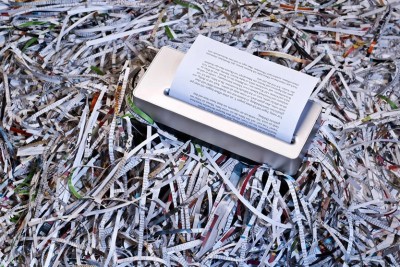There are currently no mandatory rules about the wording of retraction notices.Credit: ericsphotography/Getty
Retraction notices — the explanatory statements published alongside papers that have been withdrawn from the literature — have become more clearly worded and easier to access in some cases, according to a study that looked at hundreds of these notices.
The findings, published last month in Accountability in Research, show only modest progress over a ten-year period and are limited in scope1. But the work highlights the need for publishers to agree on more consistent guidelines and commit to greater transparency, the authors say.
“We rely on science and technology to make decisions,” says co-author Misha Angrist, a science-policy researcher at Duke University in Durham, North Carolina. “If some aspect of that turns out to be incorrect, whether because of nefarious behaviour or an innocent mistake, we would like for the retraction to be in the same size font and easily accessible and easily understandable.”
Guidelines, not rules
Papers can be retracted by their authors or publishers for myriad reasons, including honest errors, authorship disputes or problems that arise from research misconduct. Journals started publishing retraction notices in the 1970s, but there are no mandatory rules for writing up a retraction.
In 2009, the Committee on Publication Ethics (COPE), an association of journal editors and publishers in Eastleigh, UK, published voluntary guidelines on retractions, including what to include in notices. Then in 2015, the media organization Retraction Watch, which tracks paper retractions, posted recommendations for what to include in a retraction notice. These suggest that notices include a clear explanation of why a paper has been retracted, mention when the journal was first alerted to potential problems and state whether any other papers are affected.

US project seeks standard way to communicate research retractions
“It’s really important to include everything that could have happened after the publication,” including reports of failed attempts to replicate research and critiques on discussion platforms, says Frédérique Bordignon, who studies research-integrity practices at the Paris Institute of Technology. Without clear, readily available retraction notices, there is a risk that researchers are “relying on something that is not reliable anymore”, she adds.
To investigate whether the various guidelines have led to improvements, Angrist and his colleagues used the Retraction Watch database to identify 768 retraction notices issued by two publishers — Springer (now part of Springer Nature) and Wiley — in 2010, 2015 and 2020. (Nature’s news team is editorially independent of its publisher.) The researchers created a scoring system based on the COPE guidelines and Retraction Watch recommendations, and used it to rate each retraction notice on a scale from zero to two.
The rating criteria included whether the notices were freely available, rather than behind a paywall, and accessible — that is, linked to the paper. They also took into account whether the notices contained key information, such as detailed reasons for the retraction, the outcomes or status of any investigations into potential misconduct, details of which specific parts of a paper are invalid and who initiated the retraction.
The analysis found that scores for Springer’s retractions improved from 2010 to 2020, for example the score for making the notices accessible rose from 1.25 in 2010 to 1.9 in 2020. But they remained low in some categories, such as acknowledging investigations (0.25 in 2020). Wiley’s retraction notices did not improve over time and had lower scores in some categories in 2020 than in 2010, including for disclosing the reasons for retractions (1.61 in 2020 compared with 1.73 in 2010) and making notices accessible (1.29 in 2020 compared with 1.63 in 2010).
Limited study
The authors acknowledge that their analysis is limited and doesn’t cover any retractions issued since 2020. A study of more recent retraction notices could provide a better understanding of how well current guidelines and standards are working, they note. The number of retractions is growing rapidly — last year saw a record, with more than 10,000 papers retracted.
“It’s a pilot study because we had a limited amount of time and bandwidth to do this, but I think our work is ripe to be built upon,” says Angrist.

More than 10,000 research papers were retracted in 2023 — a new record
“We have been working to ensure our retraction notes follow a consistent structure over the last few years,” says Chris Graf, director of research integrity at Springer Nature in London. The publisher’s current criteria for retraction notices “provide transparency and consistency whilst also being practicable” and are “more extensive than those set out by COPE”, he adds. It is not always possible to mention investigations that are carried out by authors’ institutions “either because they were provided in confidence or because they were not provided at all”, he says. “Most of the retractions we publish are not the result of or accompanied by an institutional investigation.”
“Wiley supports the call for increased standardization of the retraction process, in addition to the consistent use of existing frameworks,” says Michael Streeter, director of research integrity and publishing ethics at Wiley, who is based in Malden, Massachusetts. “Clear signposting of the retracted status of any article is essential to readers and researchers. This is a central practice at Wiley.”
The study calls on publishers to agree on criteria for publishing retraction notices. But “to what extent this could be applicable to all journals, all kinds of journals, all kinds of papers … the difficulty is huge”, says Bordignon. “It might be a long path.”
